The following slides accompanied a presentation delivered at ASHA’s Clinical Practice Research Institute.
The Logic of a Staged System of Clinical Research
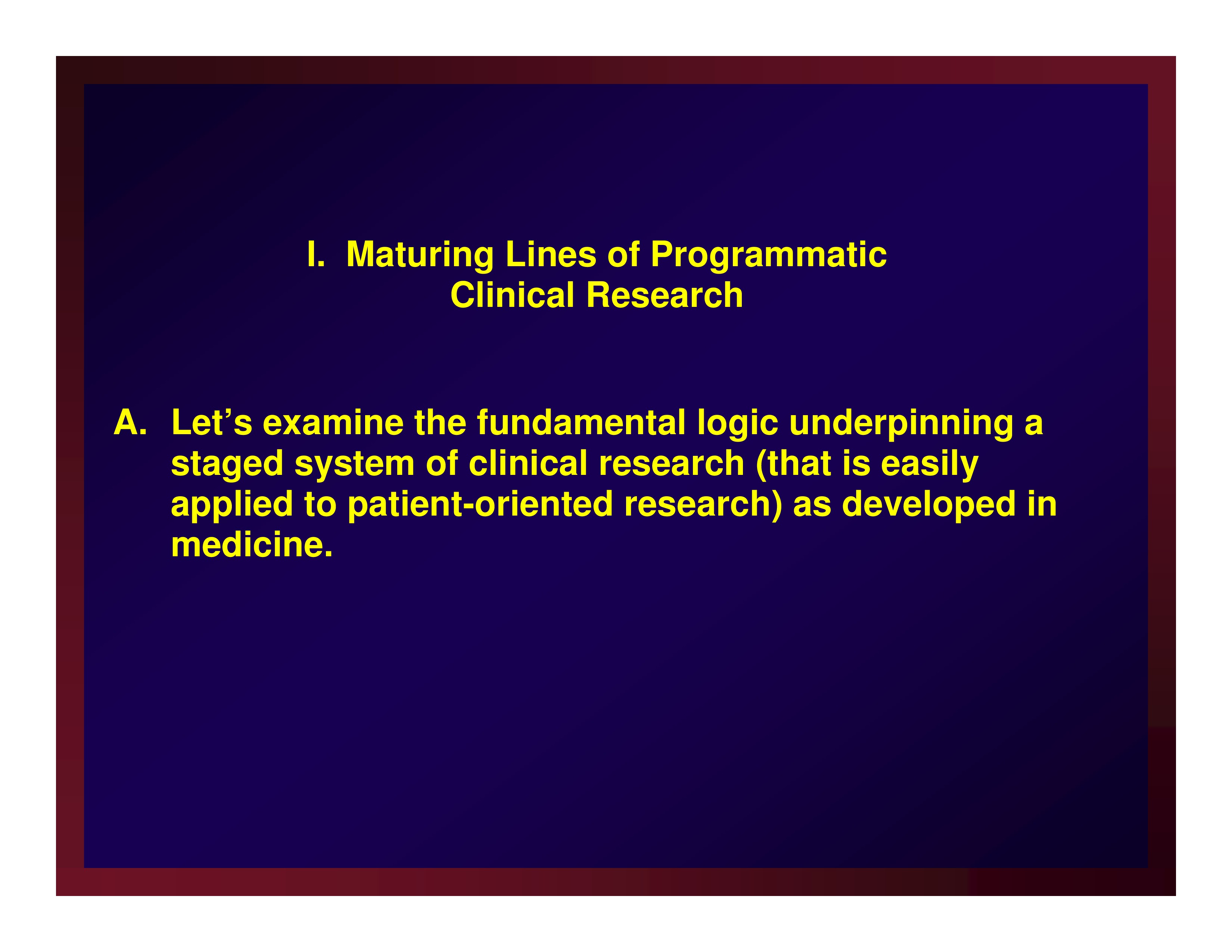 Let’s examine the fundamental logic underpinning a staged system of clinical research (that is easily applied to patient-oriented research) as developed in medicine.
Let’s examine the fundamental logic underpinning a staged system of clinical research (that is easily applied to patient-oriented research) as developed in medicine.
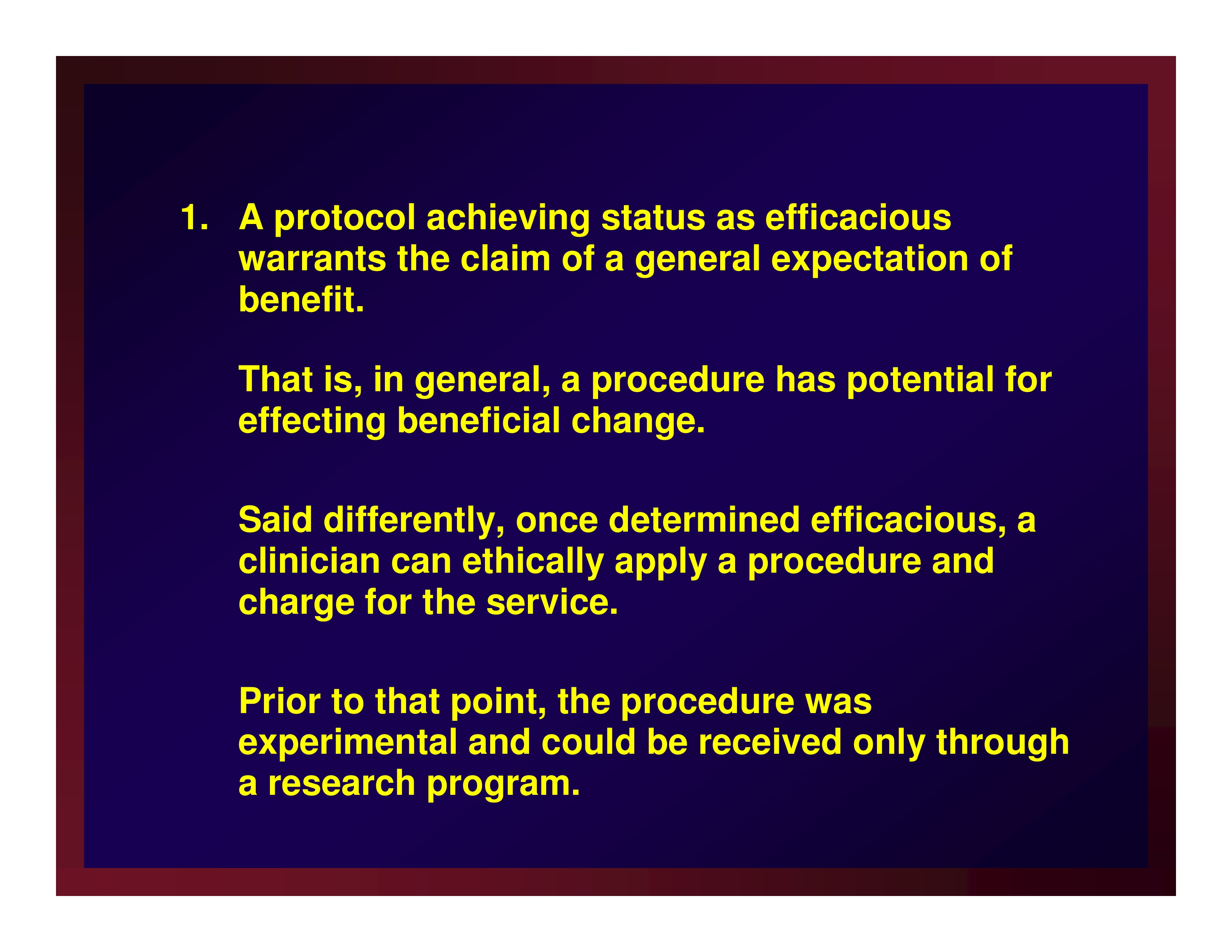
A protocol achieving status as efficacious warrants the claim of a general expectation of benefit.
That is, in general, a procedure has potential for effecting beneficial change.
Said differently, once determined efficacious, a clinician can ethically apply a procedure and charge for the service.
Prior to that point, the procedure was experimental and could be received only through a research program.
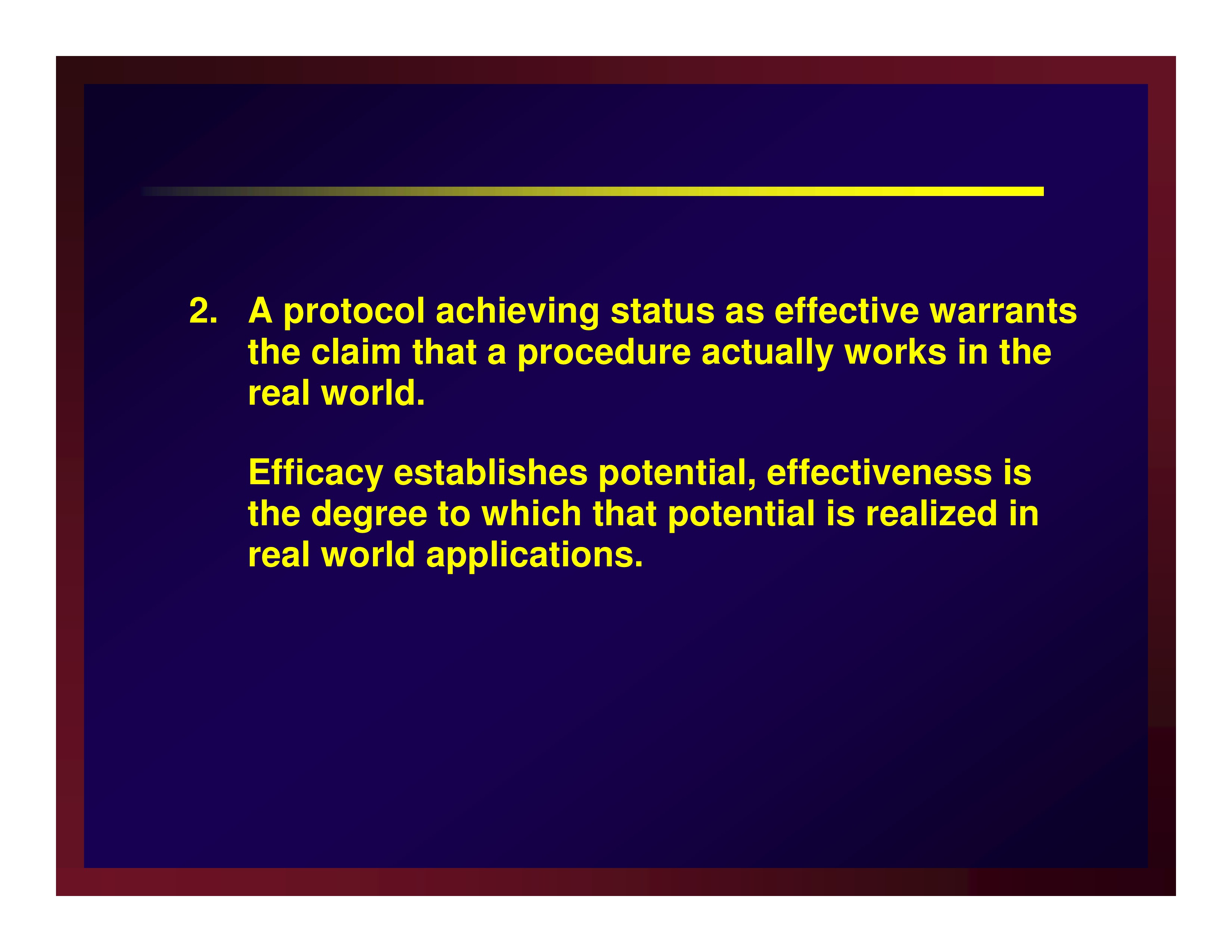
A protocol achieving status as effective warrants the claim that a procedure actually works in the real world.
Efficacy establishes potential, effectiveness is the degree to which that potential is realized in real world applications.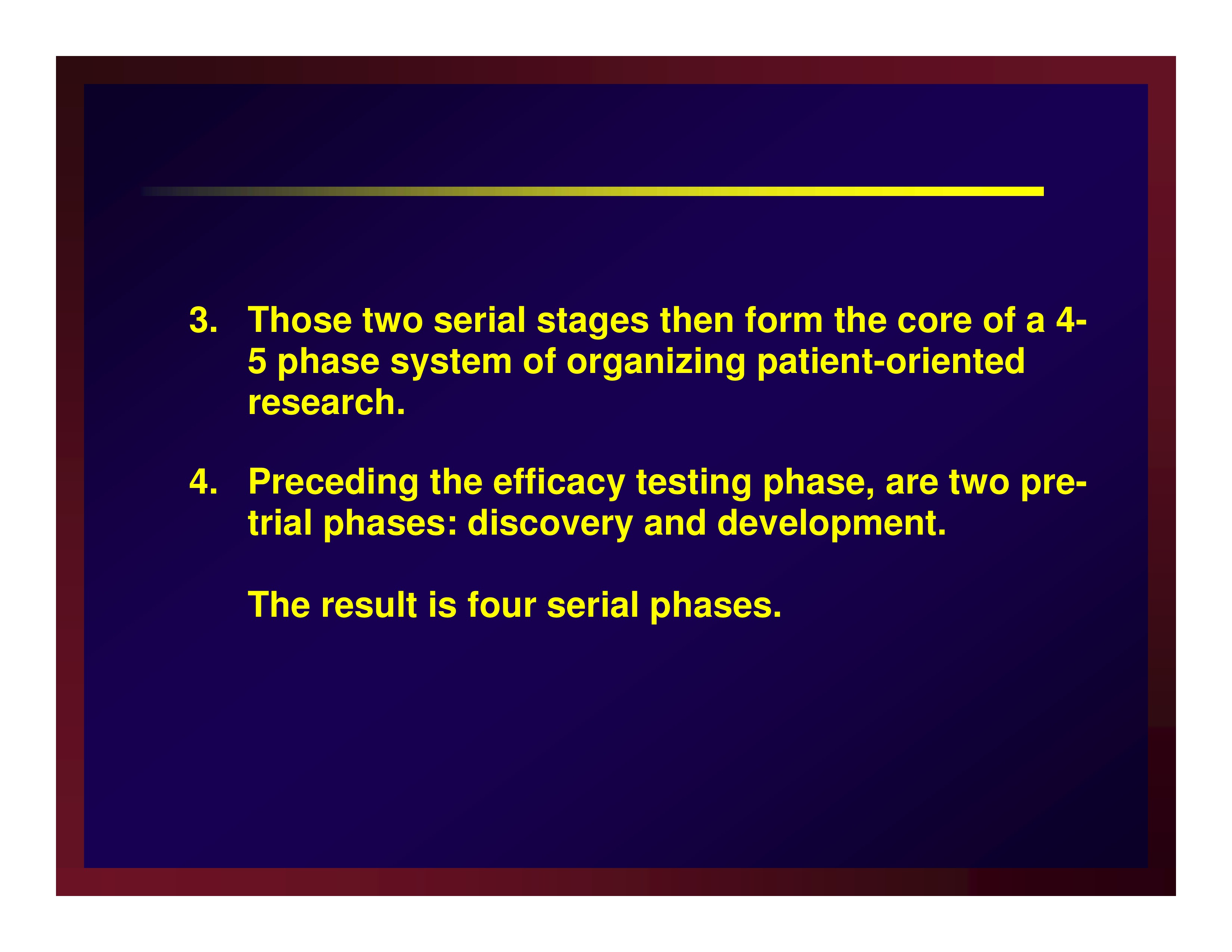
Those two serial stages then form the core of a 4- 5 phase system of organizing patient-oriented research.
Preceding the efficacy testing phase, are two pretrial phases: discovery and development.
The result is four serial phases.

An optional 5th phase centers on the worth of an effective protocol to society and policy makers.
Overview of Phases

Phase I: Discovery and translational research
- Case studies
- Case series
- Discovery-oriented single-subject studies
- Translational research

Phase II: Basic clinical research, testing safety, and psychometric development
- Case studies, case series
- Case control
- Single-subject
- Longitudinal, cross sectional, and survival-analysis
- Cohort
- Psychometric

Phase III: Efficacy or safety testing
- Behavioral interventions
- Parallel-groups studies (randomized, perhaps not)
- Repeated measures comparative studies
- Growth curve studies
- Single-subject studies
- Diagnostic accuracy studies
- Physiological interventions
- Cross-over studies

Phase IV: Effectiveness testing
- Parallel-groups studies
- Pre-post studies
Phase V: The worth of a procedure to a society
- Cost-effectiveness studies
- Customer-satisfaction studies
- Quality-of-life studies
- Longitudinal, cross sectional, and survival-analysis
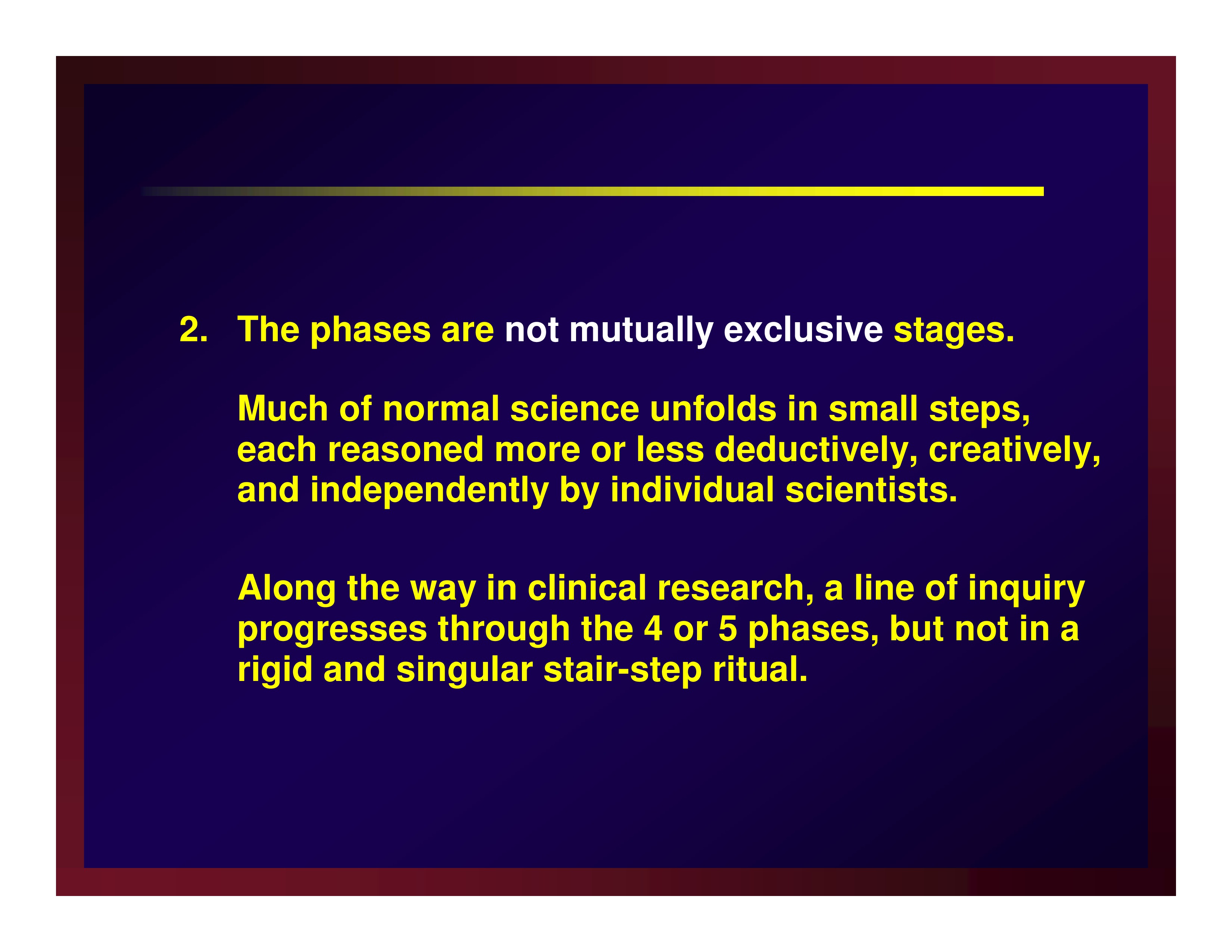
The phases are not mutually exclusive stages.
Much of normal science unfolds in small steps, each reasoned more or less deductively, creatively, and independently by individual scientists.
Along the way in clinical research, a line of inquiry progresses through the 4 or 5 phases, but not in a rigid and singular stair-step ritual.
Caveats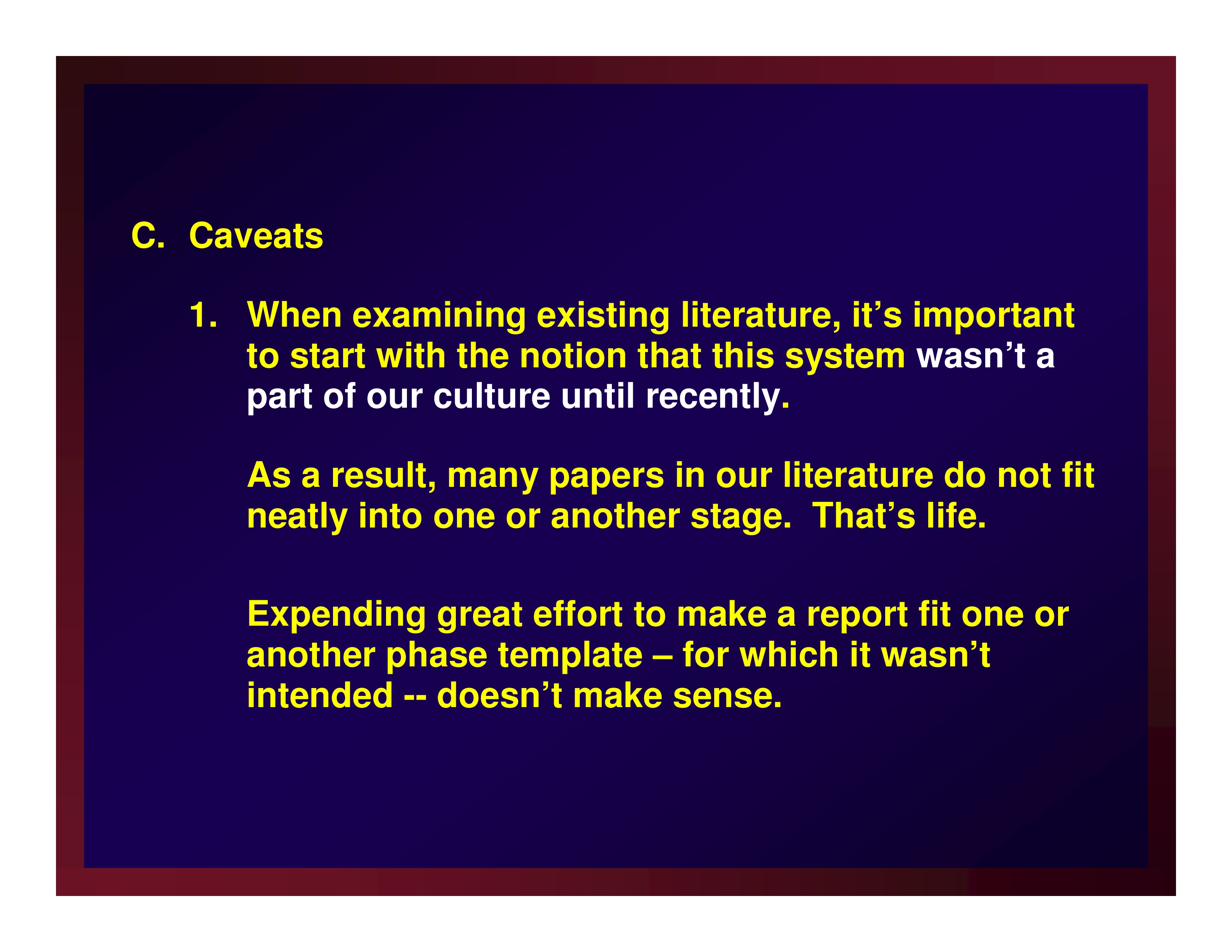
When examining existing literature, it’s important to start with the notion that this system wasn’t a part of our culture until recently.
As a result, many papers in our literature do not fit neatly into one or another stage. That’s life.
Expending great effort to make a report fit one or another phase template – for which it wasn’t intended — doesn’t make sense.
Values and Fundamental Notions
Values
An organizing frame and parlance consistent with the greater patient-oriented research community.
A much more effective and efficient means for building an evidence base for moving new protocols into clinical practice (than status quo ante).
A fundamental notion about research designs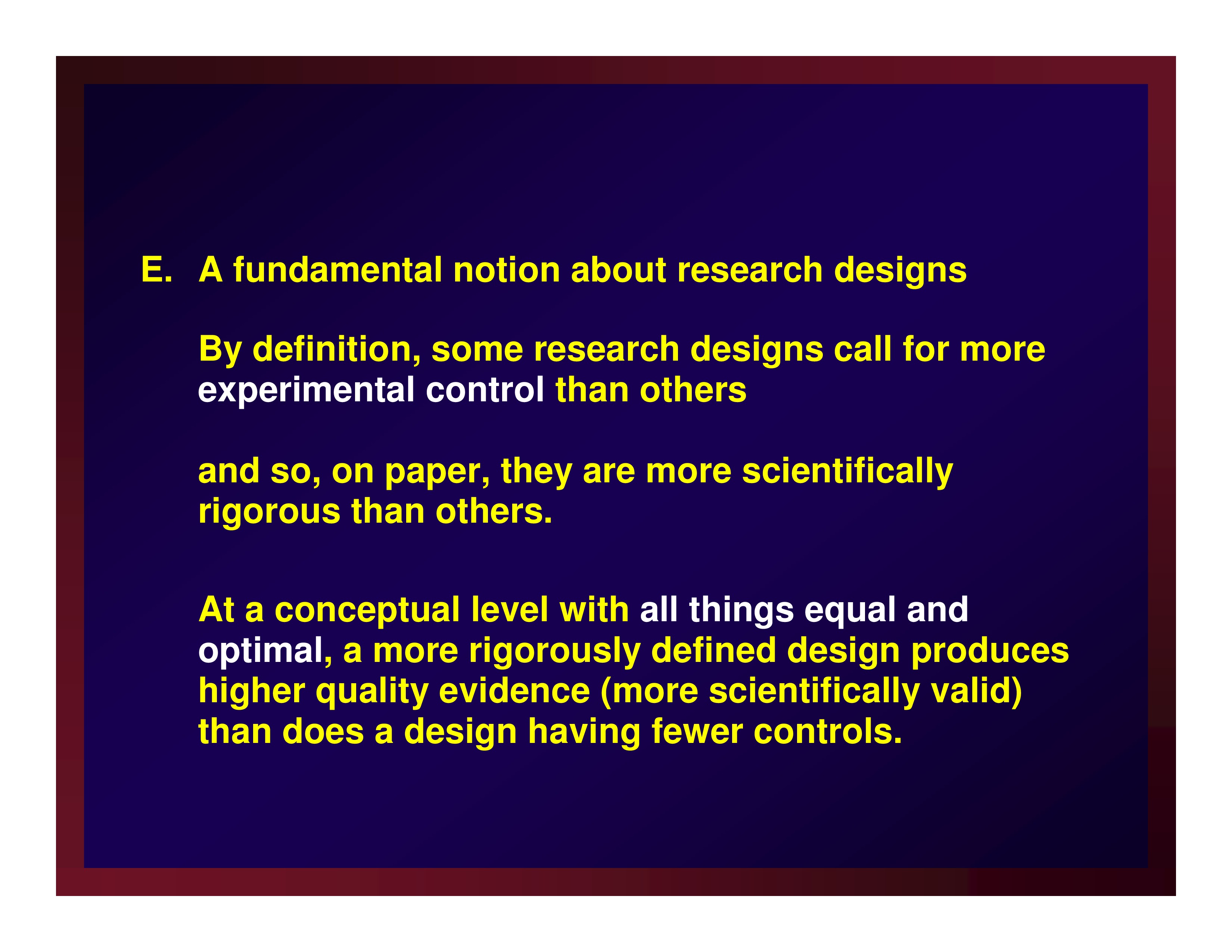
By definition, some research designs call for more experimental control than others.
On paper, they are more scientifically rigorous than others.
At a conceptual level with all things equal and optimal, a more rigorously defined design produces higher quality evidence (more scientifically valid) than does a design having fewer controls.
Two Caveats
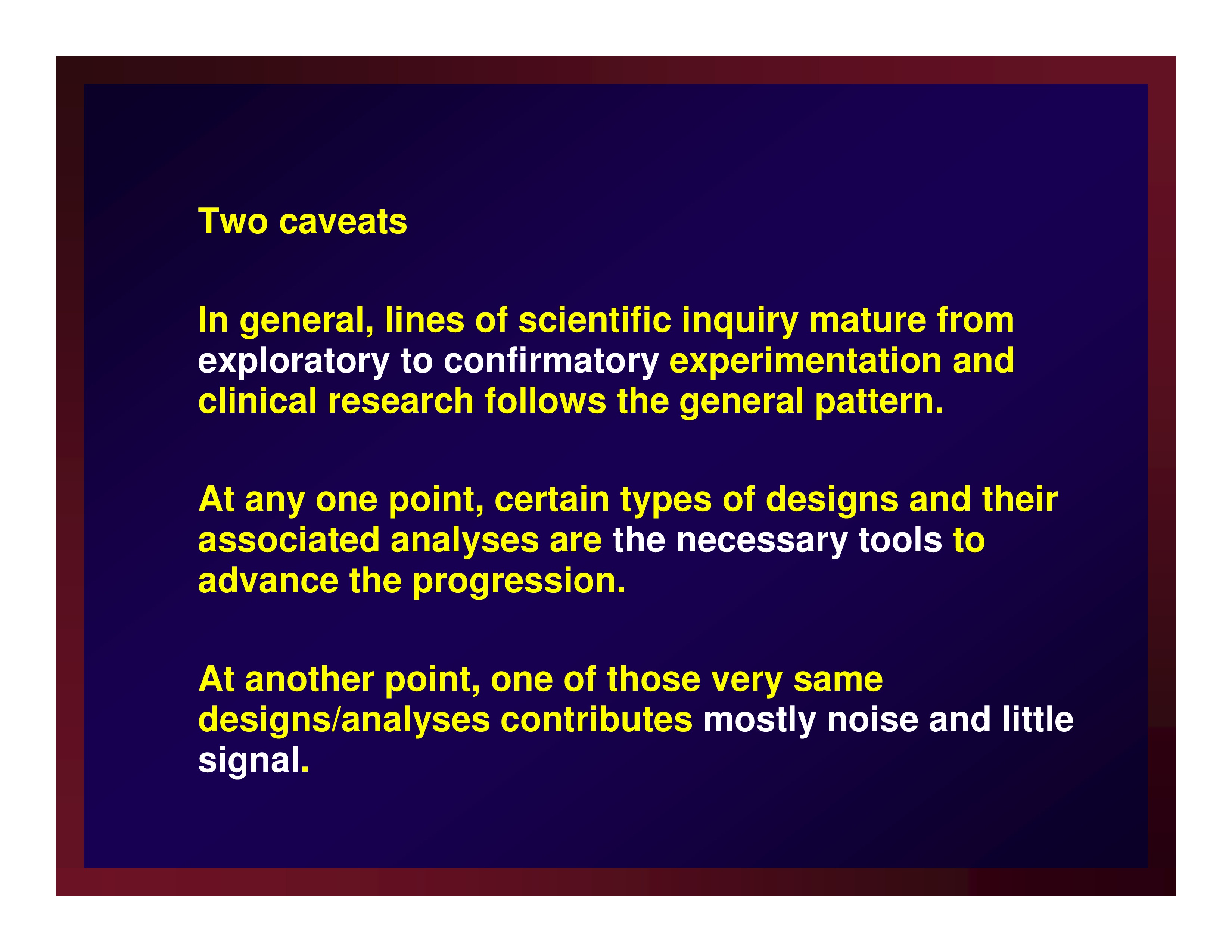
In general, lines of scientific inquiry mature from exploratory to confirmatory experimentation and clinical research follows the general pattern.
At any one point, certain types of designs and their associated analyses are the necessary tools to advance the progression.
At another point, one of those very same designs/analyses contributes mostly noise and little signal.
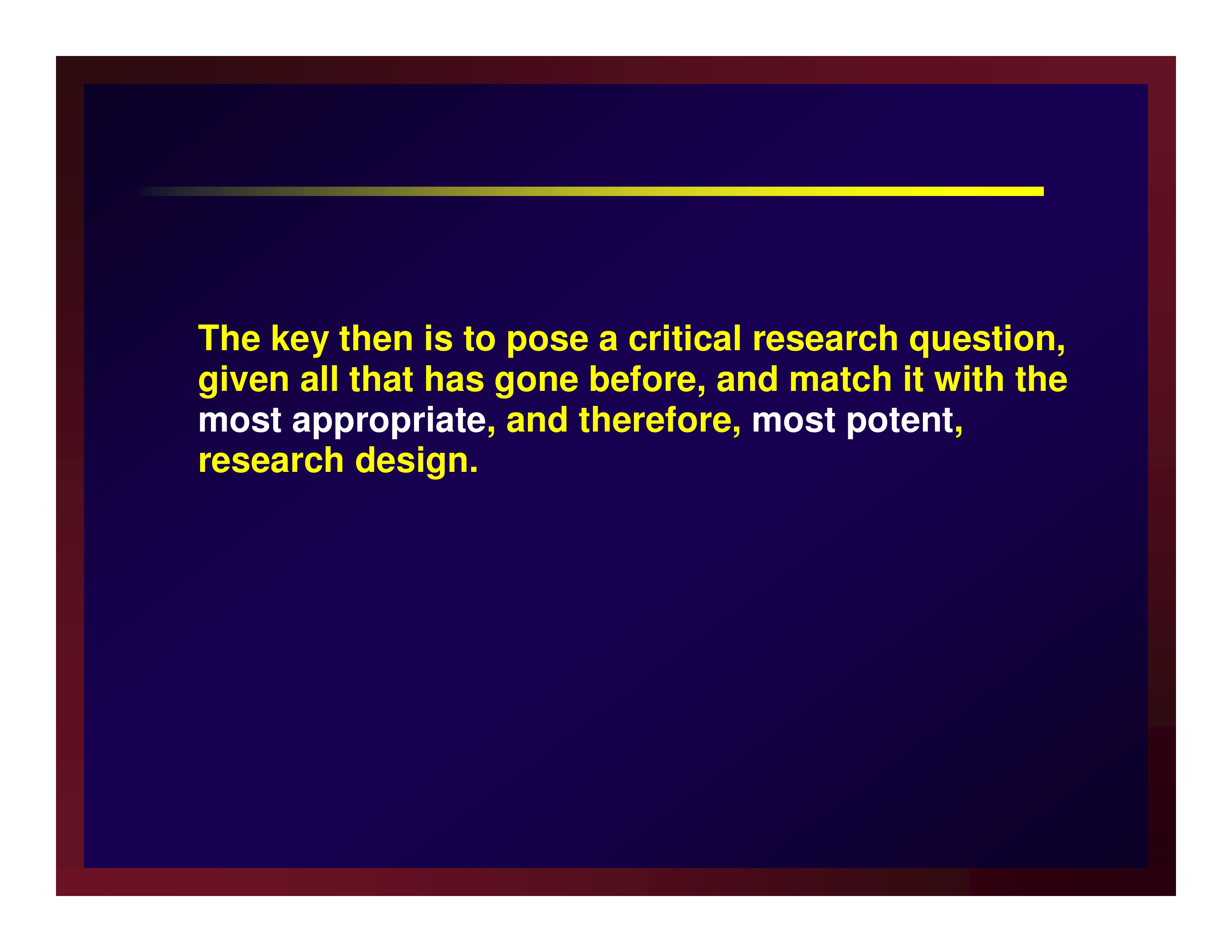
The key then is to pose a critical research question, given all that has gone before, and match it with the most appropriate, and therefore, most potent, research design.

Secondly, at any point in a line clinical line of inquiry, the most appropriate design can be done badly in degrees ranging to unusable evidence.
The name of a research design does not imbue any level of scientific quality to the research procedures or the resulting outcomes.

The value of evidence is determined by
- the quality of the question,
- the appropriateness and quality of the design, and
- the scientific rigor with which it is implemented
and as assessed through
- experimental validity,
- reliability, and
- precision.
Further Reading
Robey, R. R. (2004). A five-phase model for clinical-outcome research. Journal of Communication Disorders, 37(5), 401–411 [Article] [PubMed]





